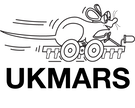WordPress is a versatile publishing platform that has many uses. As a result, a typical WordPress site contains both posts and pages. Although most WordPress sites are used as a blogging systems, it is also used in a remarkable range of applications including media sites, newspapers, magazines, on-line stores and even for entire corporate websites and intranets.
You don’t want to read an exhaustive tutorial. Instead, have a look at this page for the basics. Explore the links and create some posts. Have fun.
Posts
- Chronologically ordered
- Organised into categories
- Use tags for additional grouping
- Displayed in lists or groups by time, category or tag
- Blogs are collections of posts
- Think of newspaper or magazine articles, updates, event reports . . .
Find out more about writing posts here: https://wordpress.org/support/article/writing-posts/
Pages
- Not ordered by time
- No categories
- No tags
- Part of a hierarchy – pages can have sub-pages
- Can be used to build menus
- Static and timeless
- Books are collections of pages
- Think of how-to guides, manuals, product lists/descriptions, about-us . . .
Find out more about pages here: https://wordpress.org/support/article/pages/
The wordpress site has a summary of the differences between posts and pages as well as some guidance on how to convert one to the other. https://wordpress.com/support/post-vs-page/
Content Editor
Posts and pages are created in much the same way. Because of that, you can use the same editor for both. In current versions of WordPress, the editing environment is called Gutenberg. Content is arranged in blocks which, for many purposes correspond to headings and paragraphs. Block are much more capable than that though and con contain not only sophisticated content but also, in some cases, other blocks. While the Gutenberg editor shows you the page pretty much as it will be displayed, there are difference. The font, for example, will not be the one set in the theme. Also, the block spacing will be different to help you select blocks in the editor. Make frequent use of the ‘preview’ button top right of the screen.
Find out about the WordPress Editor here: https://wordpress.org/support/article/wordpress-editor/
That video by Envato Tuts+ is part of a playlist full of handy short tips on how to do stuff with WordPress: Learn WordPress Playlist
You might also find this video useful:
Media Library
Any site would be pretty boring if it contained only text and so WordPress can manage pretty much any media type in its media library. Media files are not, sadly, organised into groups and a large site can have a large, disorganised-looking media library. Nonetheless, this is where pictures and file attachments can be stored. Files can easily be added from your desktop as needed and, once in the library, they can be edited for size and cropped as you wish.
Find out more about the media library here: https://wordpress.org/support/article/media-library-screen/
Wider use
WordPress has many other uses and can be customised into sites that hardly reveal their WordPress origins at all. Nevertheless, they all share these common features. Some more examples of well-known WordPress users include Vogue, Rolling Stone Magazine and the Walt Disney Company. You can view more users at the WordPress Showcase.
For the novice user here are some links to useful information about getting started when you add content to a WordPress site.
Examples on this site
There are a number of pages on this site that are visible only to logged in users – you if you are reading this page. These sample pages are just a playground where I have illustrated some of the things that you might like to place into a post or page. Have a look, marvel at their chaos and then hit the link to edit the page and see how it was put together. The pages are live so please try to leave it as you found it. However, you are free to create your own pages to play with.
